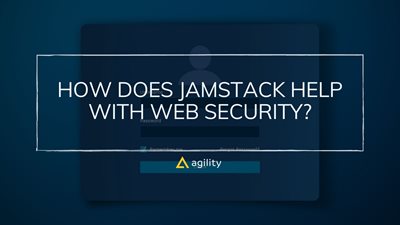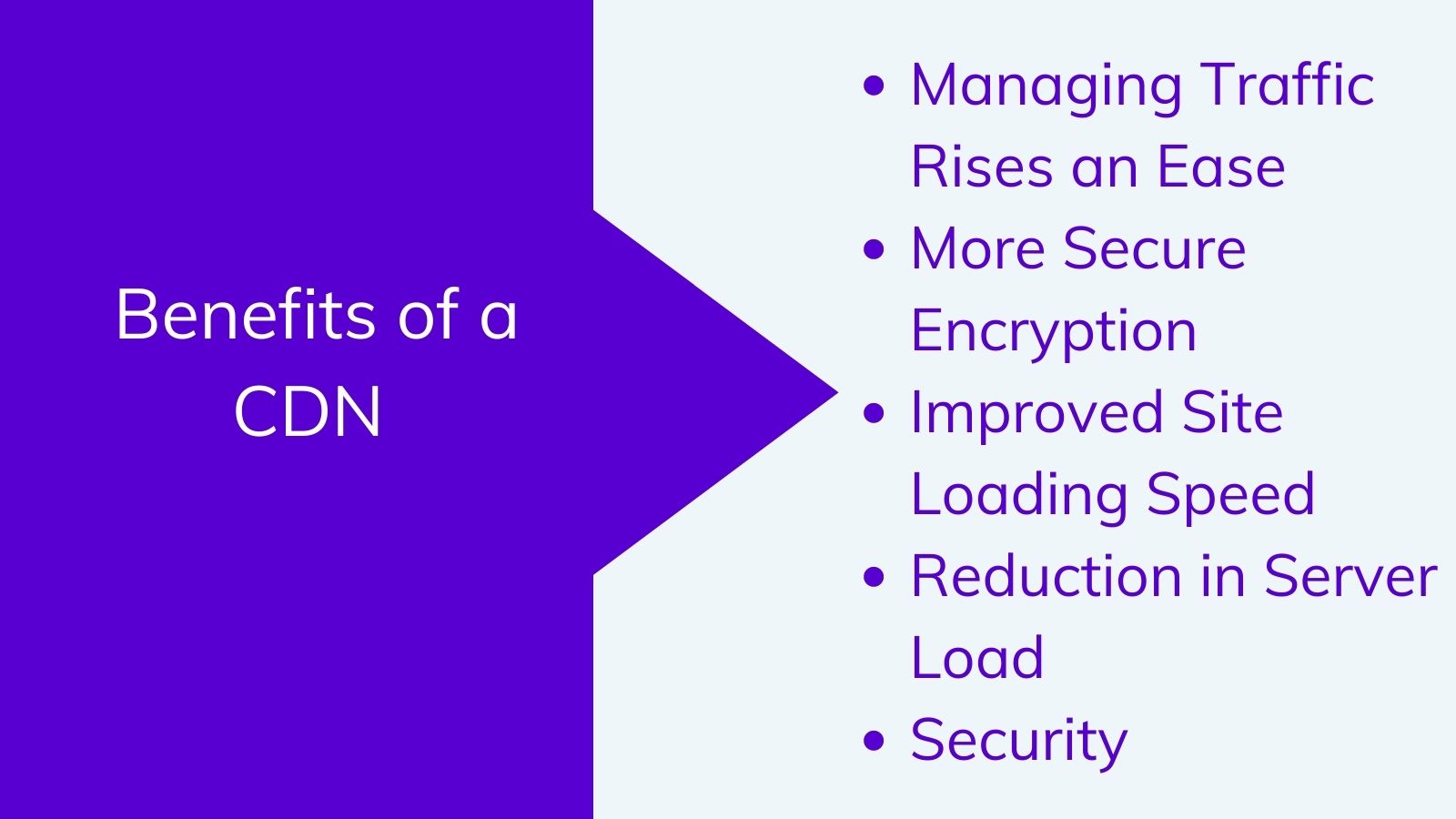How does Jamstack help with Web Security?
Building websites with Jamstack is a step forward in innovation and improvement.


Building websites with Jamstack is a step forward in innovation and improvement. Today, a digital product's success hinges on its ability to respond quickly. Users expect to be able to access the information they need with the click of a button.
Therefore, page loading times are essential in keeping visitors engaged. And your site's performance in search engine results is directly related to its SEO (search engine optimization).
Further, you can't get more visitors to your website or app without speed loading, which is a significant hurdle to your business's expansion.
It's critical to have a firm foundation in technology that can expand with your company while also easing your concerns. As we know, Cyberattacks are on the rise, and a large percentage of web applications are vulnerable to them.
Protecting your website is essential, but it's a much more pressing issue. As a result, a large percentage of web applications are at risk.
That's why; this article will explain how Jamstack could be helpful with web security, why Jamstack is the future of web development, and how you may benefit from it.
Jamstack and web security
Jamstack is an approach for enhancing the performance of web applications that do not rely on any particular framework. It is a modern architecture for building websites that generate pages before deploying them.
With the help of Jamstack, it is possible to host an application on static servers or, even better, on content delivery a network (CDNs), making these applications run faster than apps produced dynamically.
Moreover, your website will be much more secure due to the architecture's simplicity, which will significantly minimize the number of security risks it contains.
Using the Jamstack design, static pages can be served from a CDN. There are numerous advantages to working with a CDN on your web project.
- In the first place, your website will never go down. Furthermore, since your server is split among a large number of servers throughout the world, your website will not be affected by a sudden rise in traffic.
- To scale your website, you can rely on Jamstack.
- Your website will be more secure due to the architecture's simple design and less vulnerable to outside attacks if it doesn't include a database or dynamic software running on a single server.
- With fewer hours of maintenance required for security upgrades, this means lower costs.
No Database to Attack
What is a Database Attack? It is a method in which an attacker inserts input code into queries, causing a change in the sequence that the administrator intended for the query structure, and then gains access to the database, which ultimately leads to the destruction of data or user information stored within. If the injection occurs, it will take advantage of weaknesses in the database layer.
Generally, it is a frequent attack that can be used to gain access to the website or disrupt its operation. However, input validation is the most crucial aspect of a database. If input validation is not addressed throughout the software design phase, things worsen and produce many vulnerabilities and security issues.
Why having no Database is Suitable for Cybersecurity
Do you believe that not having a database benefits a company's Cybersecurity? The answer to this question is yes, and the reason for this is that databases are the backbone of any organization, especially an internet firm. They keep tabs on everything from your orders and clients to your inventories.
Unfortunately, even though these databases are significant, some businesses still do not effectively safeguard them as required.
The practice of defending something digital from attacks by hackers is known as Cybersecurity. Attacks on computer networks are nothing new and have become increasingly widespread in this age of rapidly advancing technology.
While some attacks go for financial resources, others go after sensitive information. Cyber-attacks, regardless of their mode of operation, can potentially destroy lives and enterprises. Therefore, the best defence is to be ready for any attacks. Therefore, your website will be secure from cyberattacks if you have a website with no database.
No Server to Attack
What is a Web Server Attack
Web servers are responsible for hosting websites. Web servers are just computers running an operating system; they are connected to the back-end database and are responsible for executing various applications.
An assault could be initiated against the web server if any programs, the database, the operating system, or the network contained vulnerabilities.
An adversary can employ various tactics to compromise a web server, including denial of service (DoS) and distributed denial of service (DDoS), DNS server hijacking, DNS amplification, and many more.
Why having no Web Server is suitable for Cybersecurity
It is true that not having a web server is better for Cybersecurity. This is because numerous high-profile hacking assaults have demonstrated that web security is still the most critical issue for any company that runs its activities online.
Due to the sensitive information web servers typically store, they are one of the most vulnerable aspects of an organization that is accessible to the public.
Securing a web server is just as important as ensuring the website or web application is hosted on the server and the network around it.
Even if you have a secure online application but an unsecured web server, your company is still in significant danger. Your organization's safety is only as good as its most vulnerable spot. It is not an impossible endeavor, even though securing a web server can be a challenging process that requires the skills of security professionals. Therefore, if your website does not have a web server, you will not be affected by any assaults launched against it.
Completely Externally Hosted
What is CDN?
CDN is a cloud computing solution whose geographically distributed architecture allows websites and OTT content to be transferred from the closest places. This service reduces response times for queries from diverse Internet platforms, such as those used for e-commerce, gaming, and video.
Today, content delivery networks (CDNs) handle a load of most internet traffic around the globe. CDNs provide access to a wide variety of websites and platforms, each of which has the potential to improve user performance and decrease server downtime.
Content Distribution Networks' principal consumers are website or platform owners, although they eventually improve the user experience.
Benefits of a CDN

Managing Traffic Rises an Ease
User traffic tends to follow seasonal or periodic peaks in specific industries, such as retail and online shopping. In these situations, CDN providers would divide user requests among all available CDN servers to lessen the strain on those servers. In addition, the crashing and overloading of servers can be avoided by load balancing.
More Secure Encryption
The vulnerabilities in various encryption methods become more apparent over time. However, the providers of content delivery networks are extremely quick to adapt and implement new technologies as soon as they become available. And the implementation of new SSL certificates and encryption technologies is something that a reliable Content Delivery Network provider would do in a way that won't disrupt their customers' businesses as normal.
Improved Site Loading Speed
When you employ a content delivery network (CDN), you can distribute website material to users straight from the server located geographically closest to them. Because of this, the time needed to load the site will be cut down. When the loading time of a website is decreased, the overall user experience is enhanced.
Reduction in Server Load
Suppose your website is prone to receiving significant traffic, especially during particular times of the day. In that case, making use of a CDN can assist you in lowering the amount of strain placed on your server. In addition, as a result of the fact that the files will be requested from various servers situated across the network, the burden that is placed on a single server is significantly reduced.
Security
Extra security measures are used by the majority of well-known CDNs, which aid in the safety and security of your website and its data.
Advantages of using Jamstack
The imposed simplicity of the website's architecture is the basis of the vast majority of the benefits offered by a static website.
Since Jamstack eliminates layers from the stack, there is no overhead involved in serving pages from a CMS. Your application's performance, maintenance, and security are significantly improved as a result of this, in addition to being much simplified.
Because there is neither server-side code nor a database, hosting expenses are reduced, and it is simpler to scale the system. Follow the below section to know about the Jamstack benefits:

Simplified Scaling and Enhanced Performance
On the current web, website performance has critical importance. When a new request is made, a monolithic CMS architecture must build and send HTML pages. SQL queries are fine-tuned, caching layers are set up, and web hosting solutions are managed in these paradigms for hours.
So, Jamstack simplifies the process. Using this approach, developers optimize assets during runtime and then publish those optimized static assets to a content delivery network.
Scalability and performance are improved by minimizing network travel distance and latency delays to the end-users, making this easier to implement.
Cheaper Hosting
A shared web host or a virtual private server (VPS) both require monthly charges, and ongoing maintenance is the only option for web developers when it comes to traditional website hosting. However, static hosting linked with CDN is made easier using Jamstack hosting, which is less expensive than standard hosting.
Of course, hosting options for static content are plentiful, with some even offering wholly free or low-cost services. But Jamstack is a cost-effective solution to serving content at a gigantic scale to a vast geographic area because it does not require the usage of many instances or associated computation expenditures of a standard CMS web app.
SEO Friendly
Since all of the material is presented as HTML, search engines can digest it, eliminating the traditional issues connected with making a website more search engine optimized.
Google places a significant amount of weight on a website's performance when making its rankings. Indeed, Google will rank websites that load their content more quickly, ultimately increasing the number of users and a higher conversion rate.
Growing community
There isn't just one type of Jamstack product or service; instead, you can pick and select from a vast range of options. Static site generators (SSG) for various JavaScript frameworks have recently evolved rapidly in the Jamstack community.
New headless CMS is being supplied as a service, and CDNs have greatly improved. Companies like Netlify, GatsbyJS, and others have received much financing, indicating that Jamstack has plenty of room to expand in the coming years.
Bottom line
No doubt, Jamstack is all about speed, efficiency, and cost-effectiveness in the development and maintenance of web applications. However, to make your website as interactive as a CMS-built website requires combining the features of static sites — such as improved performance, greater security, and increased speed — with interactive service integrations. However, there are many static site generators and headless content management systems (CMS) to select.
To summarize, if you are concerned about speed, security, and search engine optimization, Jamstack is well worth your attention.

About the Author
Harmonie is the Senior Marketing Manager at Agility CMS
Also recommended for You

Why Does Your Marketing Department Need a Jamstack Website?

